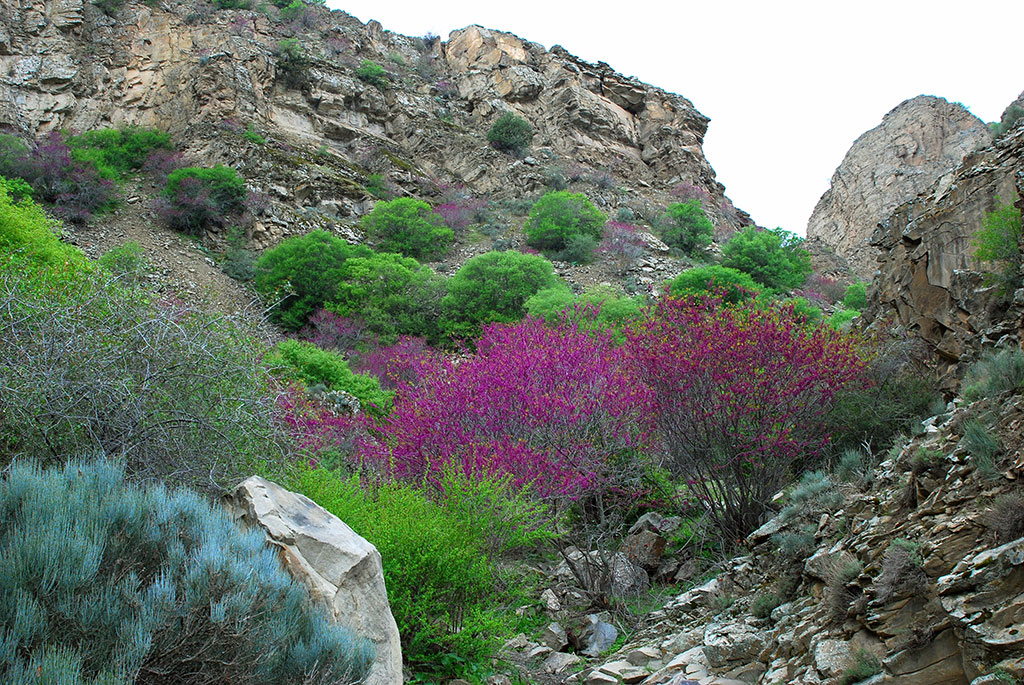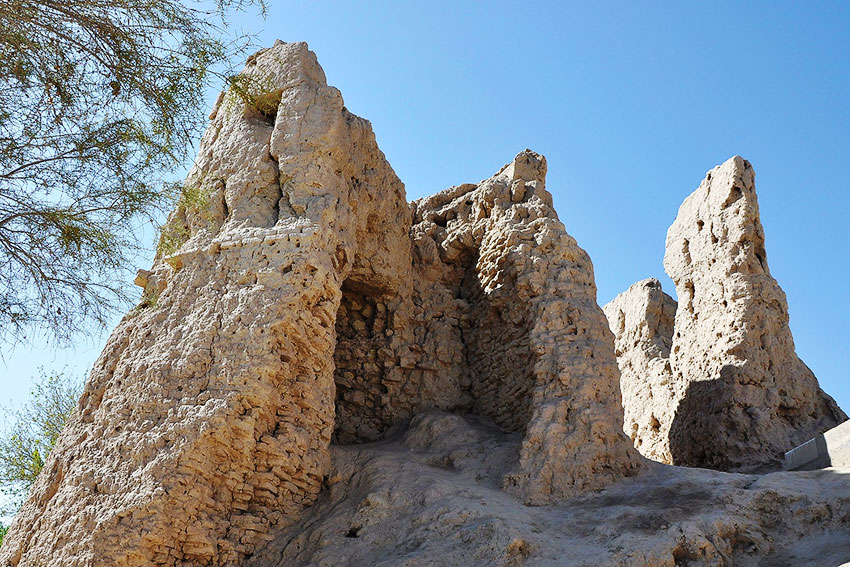Koytendag is the highest mountains in the country. Its surface formerly was the bottom of the sea. Living organisms, inhabiting in it, remain here forever in the form of fossils, speechless witnesses of the geological history of the Earth…
This land is known for its unique natural places of interest – geological, botanical and landscape monuments. It was this fact that gave cause and strong reasons to start development from principally new positions of tourism infrastructure of this region, which from time immemorial, attracted numerous researchers and lovers of travel both of our country and foreign ones by its mystic aura.

Major resource for formation here of modern tourism industry is the rarely beautiful karstic caves – Kap-kutan, Hoshm-oyik, Gulshirin and other natural caves. Amazing creature – the rarest cave fish absolutely devoid of eye by nature because of their useless inhabit in their underground lakes. It is the Koytendag blind loach. Who knows how many mysteries are hidden in the depth of this land?
Hoshm-oyik was one of first caves discovered in the western slope of Koytendag. Only its name – House of treasures inspire the anticipation of particular impressions and meeting with mysterious phenomenon. This over three-kilometer long cave starts in the bottom of disastrous crater on the border of stratums of upper Jurassic age. At the entrance, the cave is branched into numerous small chains, channels and manholes among giant plaster stalagmites. Over fifty-kilometer long Kap-Kutan is the largest one among numerous karstic caves of Koytendag. It is one of the longest cave systems in the world.
 br>Within many years, the geologists of Koytendag prospecting expedition follow after geological processes in the caves – after change of temperature, moisture, and natural radioactive background, displays of tectonic and hydro-geological processes. The researches allow drawing a conclusion about suitability of caves for organized tourism.
br>Within many years, the geologists of Koytendag prospecting expedition follow after geological processes in the caves – after change of temperature, moisture, and natural radioactive background, displays of tectonic and hydro-geological processes. The researches allow drawing a conclusion about suitability of caves for organized tourism.


In the northern part of the western slope of Koytendag, it is known numerous accumulations of clear tracks of three-fingered feet of ancient pangolins inhabited over 150 million years ago. Not far away, it was discovered another several inclined but smaller track-bearing fields, having analogy to the Hojapil plateau. The quantity of tracks exceeded thousand.

Of course, it attracts high attention of scientists; but in addition, it is enough reason for organization here of the international tourism, creation of the national park of nature as one of the most amazing places of the planet.

This land is known for its unique natural places of interest – geological, botanical and landscape monuments. It was this fact that gave cause and strong reasons to start development from principally new positions of tourism infrastructure of this region, which from time immemorial, attracted numerous researchers and lovers of travel both of our country and foreign ones by its mystic aura.

Major resource for formation here of modern tourism industry is the rarely beautiful karstic caves – Kap-kutan, Hoshm-oyik, Gulshirin and other natural caves. Amazing creature – the rarest cave fish absolutely devoid of eye by nature because of their useless inhabit in their underground lakes. It is the Koytendag blind loach. Who knows how many mysteries are hidden in the depth of this land?
Hoshm-oyik was one of first caves discovered in the western slope of Koytendag. Only its name – House of treasures inspire the anticipation of particular impressions and meeting with mysterious phenomenon. This over three-kilometer long cave starts in the bottom of disastrous crater on the border of stratums of upper Jurassic age. At the entrance, the cave is branched into numerous small chains, channels and manholes among giant plaster stalagmites. Over fifty-kilometer long Kap-Kutan is the largest one among numerous karstic caves of Koytendag. It is one of the longest cave systems in the world.



In the northern part of the western slope of Koytendag, it is known numerous accumulations of clear tracks of three-fingered feet of ancient pangolins inhabited over 150 million years ago. Not far away, it was discovered another several inclined but smaller track-bearing fields, having analogy to the Hojapil plateau. The quantity of tracks exceeded thousand.

Of course, it attracts high attention of scientists; but in addition, it is enough reason for organization here of the international tourism, creation of the national park of nature as one of the most amazing places of the planet.







